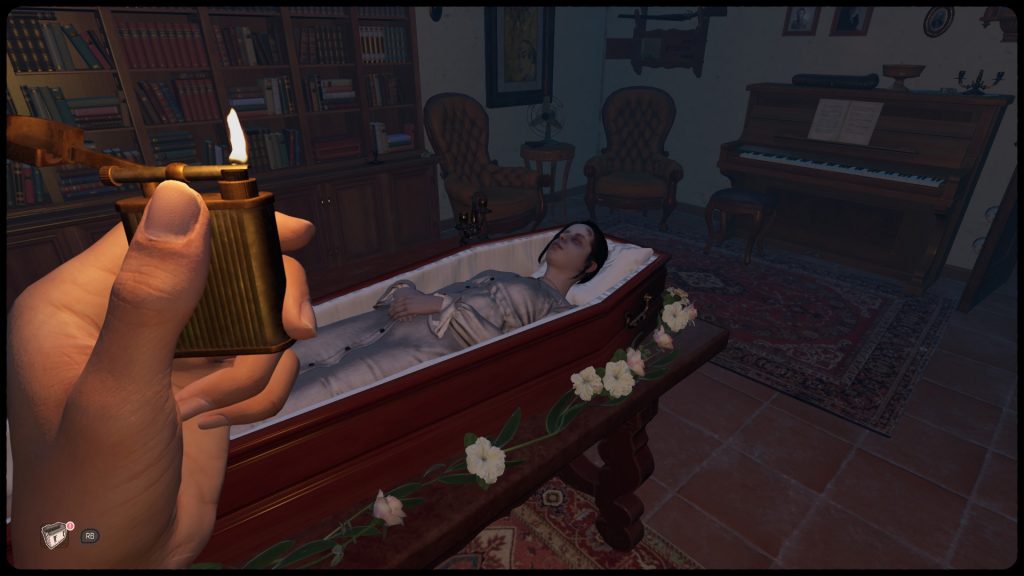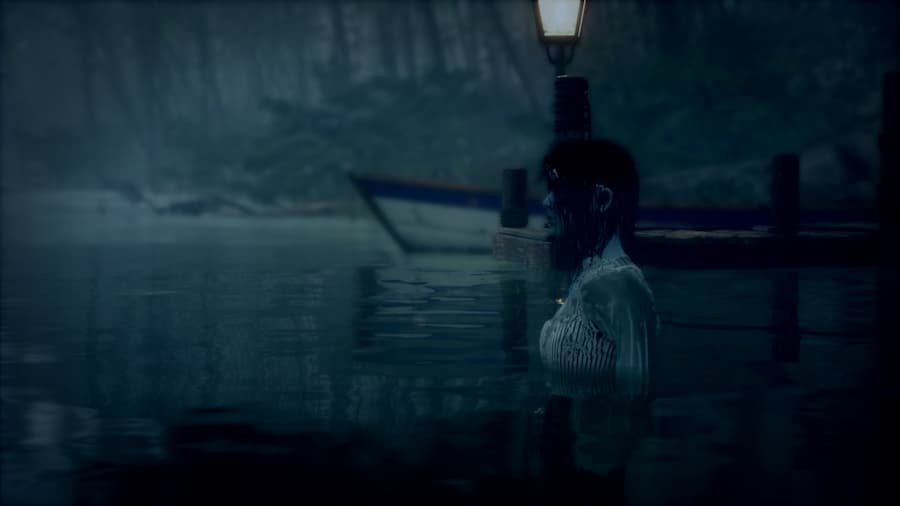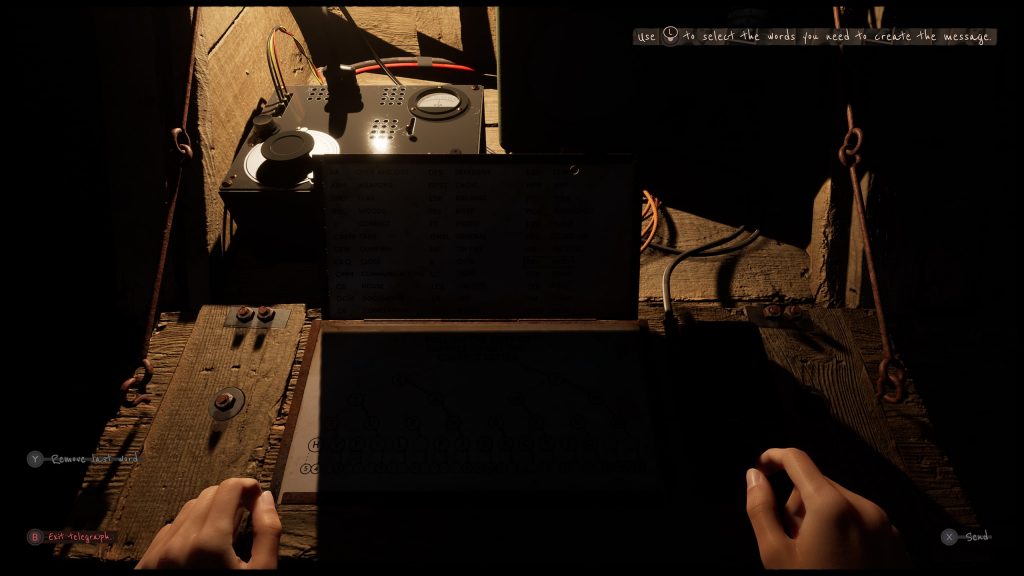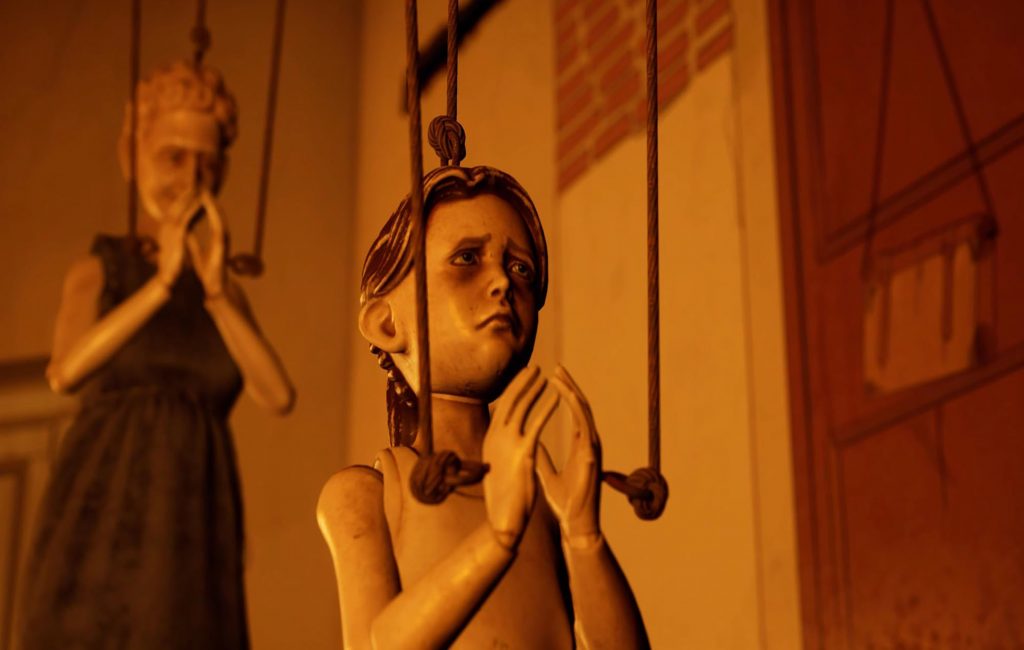Martha Is Dead is a game I thought was going to simply be another gruesome horror title in a list of walking jump scares. I was totally wrong. Instead, it’s a gripping, story driven, title that utilizes horror elements to power home a beautifully crafted story of a family stuck in the middle of World War II.
I did not expect Martha Is Dead to be one of my favorite all time games when I popped it in. Yet here I am several days after completing it totally anxious to talk about everything that happened.
Martha Is Dead
Developer: LKA
Platforms: PC (Steam), PS4/PS5 (Reviewed on PS5), Xbox Series X
Release Date: February 24, 2022
The story takes place as the twin sister of a young girl has died, but the main character, Giulia, is left dealing with the outcome of the situation. Giulia decides to take the opportunity to “become” her sister, fooling her family into believing she was the one who died and taking the place as the favorite child instead. During her journey to learn just how Martha died, Giulia uncovers secrets and memories that reflect on her life; revealing what caused a mental collapse in her as a child. While all this is happening we have a backdrop of Italy during World War II, allowing us to roam around the countryside and listen to live news alerts.

The concept of this story taking place during WWII is the most intriguing aspect of the entire game. Most WWII games throw you directly into battle, shooting up enemies, and discovering Nazi secrets like no big deal. With Martha Is Dead you are a simple family that gets stuck right in the battlefield, so all the radios are turned on and random news alerts will come on alerting of potential attacks in the area. In some instances these attacks even affect the house you are in as the power will go out or flicker, or you can see bombs drop in the distance. Giulia also wakes up every day with a new newspaper on the table which details major events happening in the war.
While the game itself is filled with horror, the most horror I felt was actually roaming around and coming across Nazi hideouts in the forest. You can sense real danger when you come across them. With notes and letters spread out through the game alerting you of being shot on site for not meeting their demands, it becomes a true danger. The details of war are so intricate too, with vibrant details or what is happening, but also interesting images that take place.
For example at one point I discovered a Nazi hideout and there was a lot of stolen artwork and museum pieces locked away in the back corner. It’s really neat this aspect of the game plays out its own story, which intertwines beautifully with the core story to really push the main character further into darkness as she has a hard time dealing with the circumstances of the situation.
Which is what the whole game is about. As Giulia is discovering what killed her sister, she has to dive deep into her memories and dark thoughts to figure things out. The further the game goes, the darker her mindset becomes. Along the way we are met with a cryptic unreliable narrator describing the events in her own view, but the magical thing about the game is that everything is open-ended to the player. You get to decide if the events you are seeing are true, if they line up with what’s said, and the eventual ending will even ask you “what do you think happened?”

If you ever read some of my top horror games to play you know that Fatal Frame has almost always made the list. Martha is Dead takes Fatal Frame to new heights. In the game you are given a camera which then can be customized with various lenses and attachments to take pictures. By using the camera you can take pictures of key areas that will uncover hidden secrets and figures which add a cryptic feel to the environment.
What I found extremely neat about the camera was the attention to detail. It wasn’t just a pull out and shoot photo editor mode, it was a very detailed process for the in game. You use specific film for various shots, and attachments change the nature of shots as well. The game also makes you develop the film and follow specific steps to do so. Along the way the game explains “this is how it’s done in real life” and will go into details about every aspect of the camera.
At first I thought it was a little weird, but throughout the game I found a real appreciation for it. Every time you pick up a new lens or attachment the game will explain what it would be used for in real life, and how to use it. And this attention to details spreads throughout the whole game with everything being crafted with care. You can see fine details in how the house is laid out, how the letters from war are written, and even things like boats are crafted to near perfection.

These details make me wish the game expanded even more on the mystery driven story. There is one mission which requires you to decipher and send morse code, and it’s actual morse code being sent back and forth which is entirely neat. The game offers a puzzle like structure to help figure it out and it was insanely fun trying to decode it, but at the same time feeling secretive with Nazi’s about made it a really tense situation. I wish we had more objectives like this, and more objectives involving capturing images on the camera to decipher things. It would have added an additional layer of depth to the game, and possibly extended the gameplay a bit.
It’s the level of detail, and the developers intent on not holding back that really drives home the game otherwise. Along your investigation will be some really gruesome scenes, some scenes that are censored a tiny bit on PlayStation by removing your ability to play them. However it’s these scenes that power home the overall message of the story, and really open up the main characters traits in the long run.
There are episodes of ripping off a characters face, seeing a character blown up by a landmine, and even an abortion style scene that is startling and disturbing in so many ways, but it’s all totally perfected in a way that hammers home a dark story of a girl. There is an option to skip all these scenes, but I feel like the discovery of trauma that is developed within Giulia would be entirely missed without seeing this.

This is extremely powerful late in the game when we get to explore the mental state of Giulia as she heads to her room to play with some marionette dolls. During these sequences she “puts on a play” of what she thinks happened. The play seems innocent enough, but it becomes increasingly dark the longer it goes on. You get to decide some instances, but overall you get to see what is actually going on in her head and then relating it to discoveries you’ve found throughout the game to figure out what is true and what isn’t. Some dark trauma erupts in her memories, and the game takes an ultimate dramatic twist. It’s really neat because during the intro of the game we have a close up Giulia talking, I didn’t think much of her, and didn’t notice many features of her face. The game then ends with her talking again, the same exact face, and now you notice scars and the emotion behind her, and look at her totally different than before.
This explains much of the game which has a rather interesting sinister feel and plays out in a sadistic way as Giulia is playing rather upbeat music, or riding around on her bicycle, and these dark events are happening all around her. The world itself even goes from a happier looking environment, to a dark twisted environment with things on fire and animals dying, and the more side quests you do the more it explains everything happening.
Which leads to the ending, and it’s somewhat open ended. If you do enough side quests you are given enough details to basically conclude yourself what happened, but overall you are still left questioning. However, unlike a previous game I reviewed, it doesn’t just end, it does a fine job of concluding “your” story and giving you some closure. Yes you are left curious and wondering what really happened, but it’s done so well that I can’t help but appreciate the fact you as a player are left to interpret what actually happened.

